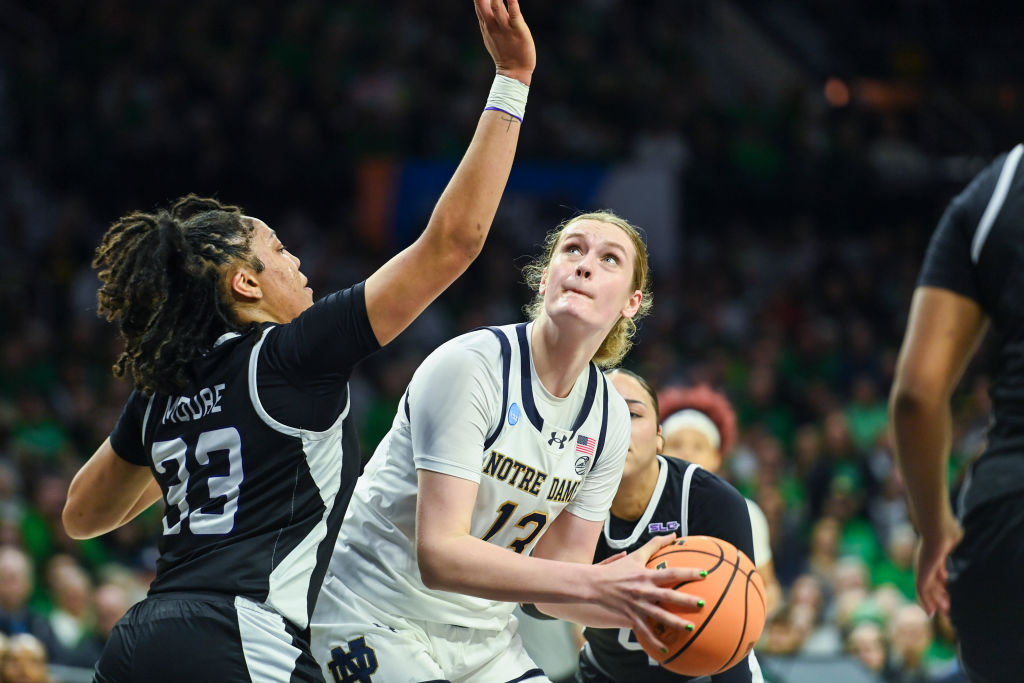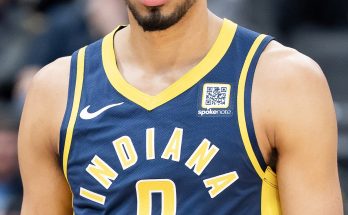The exodus from Notre Dame is still ongoing as more players use the NCAA Transfer Portal.
The departure of key players from the Notre Dame football program continues to be a topic of significant discussion as the exodus from the team intensifies. In a move that has sent shockwaves throughout the college football world, several high-profile players have opted to enter the NCAA Transfer Portal, raising questions about the program’s stability and future. This surge of transfers marks a dramatic shift for a program that has long been synonymous with success and tradition in college football. The increasing number of departures from Notre Dame leaves fans and analysts alike wondering what the future holds for the Fighting Irish as they work to maintain their position among the nation’s elite programs.
The most recent wave of transfers adds to a growing list of departures from the team, indicating a trend that has been increasingly visible across college football in recent years. The NCAA Transfer Portal, which was introduced in 2018 to give players more freedom in choosing their destinations, has become a powerful force in reshaping rosters across the country. While transfers are nothing new to college athletics, the frequency and impact of these departures seem to be more pronounced in today’s climate, particularly for a storied program like Notre Dame.
Several factors appear to be at play as Notre Dame faces this unexpected shift in its roster. For some players, the decision to enter the Transfer Portal may be driven by a desire for more playing time, a change in coaching philosophy, or the pursuit of new opportunities at different programs. Others may be looking for a better fit in terms of team culture or location. Regardless of the reasons, the fact that so many players are leaving Notre Dame in such a short period of time has become a significant storyline for the team’s future.
One of the most notable departures came from a key player in Notre Dame’s offense. The news that this player, once considered a cornerstone of the Fighting Irish’s plans, had entered the Transfer Portal came as a surprise to many. The player, who had shown flashes of brilliance during their time at Notre Dame, was expected to be a key contributor in the coming seasons. However, their decision to leave the program highlights the growing sense of uncertainty that has surrounded Notre Dame football in recent months.
While the player’s reasons for transferring have not been fully disclosed, it is clear that this departure marks the continuation of a broader trend within the program. This marks the third high-profile transfer from the team in the last few weeks, signaling that there may be deeper issues at play. The departures are not limited to one side of the ball either; players from both the offensive and defensive units have chosen to explore new opportunities. The exodus appears to span multiple positions, leaving Notre Dame with significant gaps in its roster heading into the offseason.
The question on many minds is why Notre Dame is experiencing such a surge in transfers, particularly in a time when college football programs across the country are facing similar challenges. One explanation could be the shifting landscape of college football itself. With the introduction of Name, Image, and Likeness (NIL) deals, the Transfer Portal has become an increasingly attractive option for players looking to capitalize on opportunities that may not be available to them at their current school. This new reality has transformed the dynamics of recruiting and player movement, and Notre Dame is not immune to these changes.
Additionally, the changing coaching staff at Notre Dame may also be a factor. The Fighting Irish have undergone some coaching transitions in recent years, most notably the departure of longtime head coach Brian Kelly for LSU. Kelly’s exit from Notre Dame was a significant moment in the program’s history, as his leadership had been a driving force behind the team’s success. In his place, Marcus Freeman took over as the head coach, and while Freeman has brought new energy to the program, some players may be struggling to adapt to his coaching style or system. It’s possible that the coaching change has contributed to some of the players’ decisions to transfer, as they may not see a future with Freeman’s system or believe their chances of success are better elsewhere.
The impact of these departures is far-reaching. On one hand, it opens up opportunities for younger players and recruits to step in and make an immediate impact. Notre Dame’s recruiting classes have been consistently strong, and the coaching staff has done a solid job of bringing in talent that could help fill the void left by these transfers. On the other hand, losing so many experienced players in such a short period could have serious implications for the program’s depth and overall performance. The Fighting Irish may have a talented roster, but the absence of these key contributors could leave the team vulnerable in certain areas.
For the players leaving Notre Dame, the Transfer Portal represents a chance to start fresh and pursue new opportunities. In many cases, these players are highly sought after by other programs, and their decisions to transfer will likely result in significant shifts in the rosters of their new teams. The Transfer Portal has created a more fluid environment for college football players, giving them the ability to change schools without losing a year of eligibility. For some, this newfound freedom has been a game-changer, allowing them to find a program that better suits their needs or ambitions.
For Notre Dame, the loss of so many players raises important questions about the program’s future. While the program has historically been able to reload with talent, this latest round of transfers suggests that there may be some underlying issues that need to be addressed. Whether it’s a question of coaching changes, culture, or personal preferences, the Fighting Irish will need to adapt to the evolving dynamics of college football if they are to remain a contender in the coming seasons. The program’s ability to attract and retain top talent will be key as they work to rebuild and maintain their competitive edge.
The exodus of players from Notre Dame also serves as a reminder of the shifting landscape of college football. The traditional power structures that once defined the sport are being challenged by new opportunities for players, and the transfer portal has become a central element of this transformation. Programs that once relied on stability and continuity now find themselves in a position where player movement is a constant factor to consider. The rise of NIL deals, along with the increasing popularity of the Transfer Portal, has fundamentally changed the way teams approach roster management and recruiting.
For Notre Dame, the current exodus is a challenge, but it’s one that can be overcome with the right approach. The program has a strong recruiting foundation, and Freeman’s leadership could help turn the page on this period of transition. The Fighting Irish will need to focus on building a strong, cohesive team that can weather the uncertainty brought on by the Transfer Portal. They will also need to ensure that they are adapting to the changing realities of college football, including navigating the pressures of NIL and maintaining a competitive edge in the recruitment process.
As Notre Dame looks to the future, the ongoing transfer activity underscores the growing importance of roster management in the modern era of college football. The team will need to work harder than ever to retain its talent and continue attracting top recruits. The challenges faced by the Fighting Irish are not unique to their program, but they highlight the rapidly changing dynamics within college sports. Moving forward, Notre Dame will need to embrace these changes and find ways to adapt to the evolving landscape of college football.
In conclusion, the exodus of players from Notre Dame through the NCAA Transfer Portal is a significant development for the program, raising questions about the team’s future and its ability to maintain its place among college football’s elite. While the reasons behind the transfers vary, the shift in player movement points to broader trends in the sport, including the influence of NIL and the changing coaching landscape. Notre Dame’s ability to navigate these challenges will be crucial as they look to rebuild and continue their legacy of success in the coming years. For the players leaving, the Transfer Portal offers new opportunities, but for the Fighting Irish, the road ahead will require adaptation and resilience as they move forward in this new era of college football.



